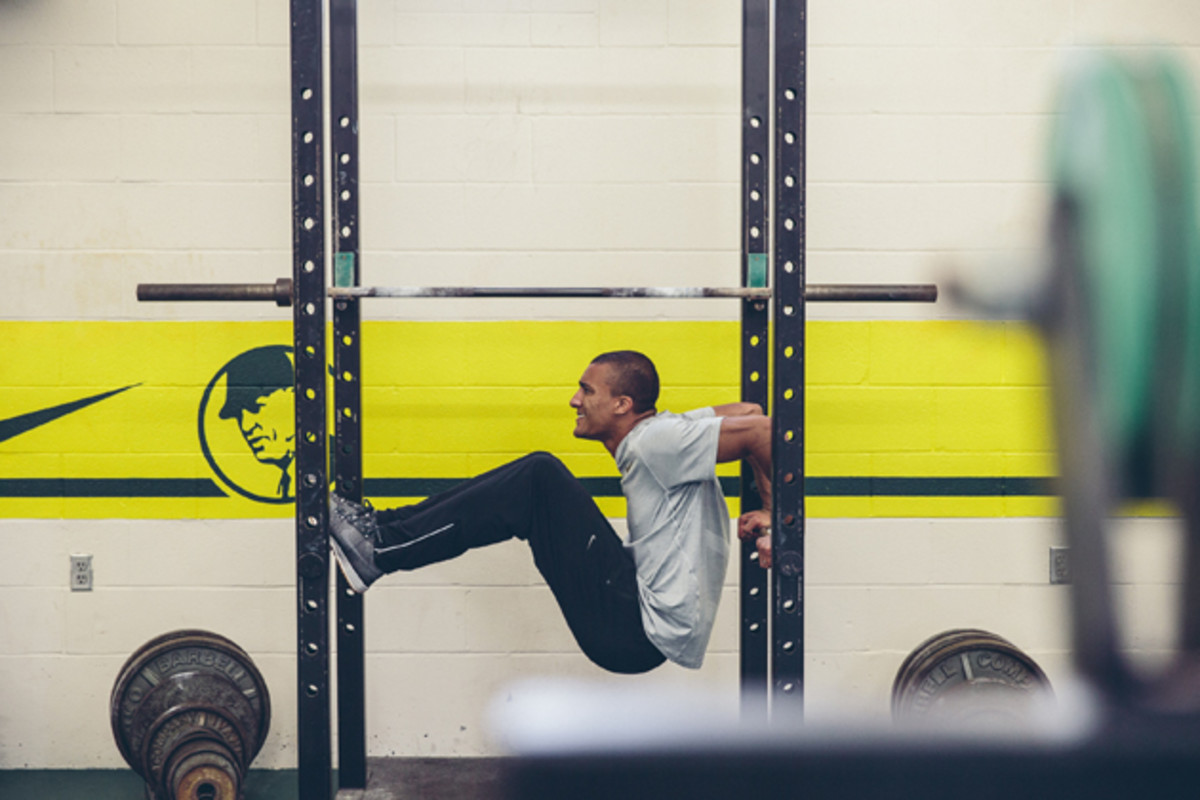For decathlon king Ashton Eaton, training means always going for more

To become a champion in any sporting event takes guts, determination, skill and perseverance. To become a master of 10 different disciplines takes, well, a mountain of well-orchestrated ability.
There’s no better example of mental and physical skill transformation than U.S. decathlete Ashton Eaton, who on Aug. 29 set a new world record for the event at the IAAF World Championships in Beijing, China, surpassing the mark he’d set in the 2012 U.S. Olympic trials.
“Defending my [2013 world title] was awesome,” Eaton tells SI.com. “On some level, I knew that if I was healthy it would be possible to get the record. But somehow when I was at the start of the last race I was still in disbelief that I was going for it. I'm glad I did. … I think it's important that if you've achieved a goal in a field to not stop there but try to take it further, or go into a different field and try to achieve another goal.”
But Eaton relies on a holistic approach to his strength and conditioning training, in order to perform at an optimal level and surpass the competition.
“I think the simple aspect of thought drives my training—how good can I be,” explains Eaton, a Portland, Ore., native, who finished with 9,045 points. “And every attempt, every day—it’s just part of the pursuit toward that.
“As far as weightlifting or strength training is concerned, I do Olympic lifting but it’s not like I sit there and just pump iron all day. [It’s] very much circuit-based, and I do a lot of auxiliary lifts; a lot of jumping around and just staying dynamic—run, cut, jump and lift.”
Eaton’s program includes a warmup, consisting of two jogging laps, sprint drills, agility drills, speed accelerations and a medicine ball program. Then, he usually focuses on two decathlon skills per workout (example: shot-put/pole vault) and follows that up with a running workout. Eaton’s sessions are concluded with a warm-down and hot/cold contrast rehabilitation therapy.
The decathlon champ, who completed the world championship’s grueling two-day crucible of the 100-meter dash, long jump, shot put, high jump, 400-meter dash, 110-meter hurdles, discus throw, pole vault, javelin throw and 1,500-meter run, also utilized Nike’s prototype cooling hood—which Eaton helped develop—between events. The hood “allows athletes to regulate head temperature and recover like never before,” according to Nike Sport Research Lab.
“I’m not afraid to try different things,” Eaton continues. “I see something, a technique, and [I ask] why is it that way … and if it’s been that way for 100 years, why has it been that way for 100 years? Has anyone thought of trying anything different; can I try something different?”
Amid his decathlon successes, in what’s one of the most demanding events in sports, Eaton stays humble and offers welcoming training advice for potential competition.

“If you use the training I’m doing to motivate yourself to go beyond what I’ve done, then I’ll be happy,” he states. “Maybe it sounds selfless but I think, in a way, it’s selfish because it makes me feel like I’ve contributed and that makes my efforts worthwhile—somebody else has gone past me.”
And as for the Rio Olympics in 2016? Well, it’s simply just the remaining slices of Eaton’s personally homemade humble pie.
“Going into Rio, my mindset has changed,” Eaton says. “Going into London, I was thinking of obtaining something. [But] it’s not for me anymore—it’s for all the people who say they get inspired by me. It’s for the fans.”
